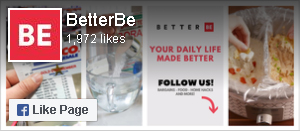The Top Tricks Marketers Use To Make You Purchase More When Shopping
1 Reduce The Left Digit By One
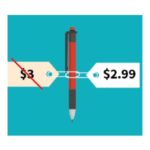
Marketing strategists use many tactics to motivate shoppers to spend more money. The next time you’re flipping through print ads, note exactly how advertisers present the visual price. One trick they often use is to reduce the left digit by one.
For example, an ad will list the price at $3 instead of $2.99. The human brain decodes numbers at such a fast pace that seeing a smaller digit at the front-end subconsciously makes the price seem a lot less than it is. People give themselves permission to buy an item based on this snap judgment.
2 Choose Numbers With Fewer Syllables

It’s amazing how easily you can spot a marketing ploy once you understand the psychology behind advertising. Another way that marketers influence you is by choosing numbers with fewer syllables. For example, $27.82 has seven syllables, while $28.16 only has 5 syllables.
This phenomenon has a logical explanation. Despite the fact that shoppers rarely say a price out loud, the human mind perceives phonetically shorter words as being less expensive. So, a higher price tag with fewer syllables will trick you into buying the more costly item.
3 Remove The Comma
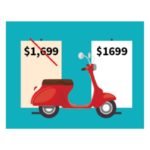
We made a thorough analysis of the various visual pricing tricks that advertisers used to reel in unsuspecting shoppers. Some of these methods are so under the radar that you may not even be aware that you’re being influenced.
Be on the lookout for advertisers removing commas from the price. If an item costs $1,000, the store may list it as $1000. This minimizes the appearance of the cost by making the price seem lower than it is. This could make a big difference when it comes to how much you’re willing to pay for big-ticket items.
4 Use Words Related To A Small Amount

Advertisers have researched the most effective ploys to get the most money out of consumers. They often use intentional language tricks to pull a shopper to their products. This is especially true on the showroom floor of car dealerships or even on smaller items at the big box stores.
Describing something as “low maintenance” or “high performance” are two examples of how marketers use semantics to create the illusion that products are more appealing than they really might be. Once you realize this tactic, you’ll recognize these buzzwords on the signage in many stores.
5 Maximize The Perceived Size Of The Discount
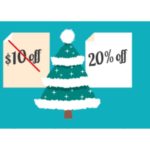
Marketing strategists have an arsenal of tools in their tool belt to help sway your spending habits. Another technique they use is showing the biggest number possible when listing a discounted price. The particular pricing trick makes all the difference in how shoppers perceive the sale cost.
So, instead of saying that an item that costs $50 is $10 off, the store will advertise the sale as 20%. Despite these being that same amount off the original price, our brain sees the larger number as being a better deal. We’re more than willing to open our wallets for the larger number.
6 Phase Out Discounts
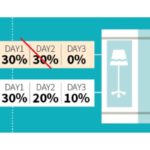
Another psychological trick that advertisers use to get shoppers to buy products is to create a false sense of urgency. Phasing out discounts is an effective method that can lure people into buying certain items. This taps into the disappointment we feel when we miss a sale by giving us another chance.
So, a store may start with a sale price of 30% off on Day 1, 20% off on Day 2, and 10% off on Day 3. Shoppers often take advantage of the last day of the sale out of fear of missing put on the discounts.
7 Decoy Pricing
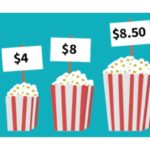
Another sneaky way that marketing strategists target your hard-earned cash is by offering decoy pricing. Movie theatres often use this trick in their concessions pricing. Have you ever ordered a popcorn only to have the employee offer you the next up for just a small amount more? That’s decoy pricing.
So, if a small popcorn is $4, the medium is $8, and the large is $8.50, we will often order the large since it’s only 50 cents more. Experts say that they only offer the medium to push consumers to the larger size.
8 Odd-Even Pricing

Shoppers are often influenced by visual pricing tactics. We’ve already covered a few examples and have another trick to bring to your attention. Often, advertisers will use odd/even pricing. This means they pay attention to the last number presented in the price.
Research has shown that the human mind responds to a price ending in an odd number near or above an even or whole number. Shoppers prefer $4.97 over $5.00. This method has been proven effective again and again by many marketing strategists. Now you know!
9 Show Price In Installments Instead Of Lump Sum

Advertisers will do just about anything to boost sales, and many of them use subconscious methods to tap into the mind of a shopper. Another decoy pricing tactic often used is showing the price in installments instead of a lump sum. We’re more prone to act on the lower number.
You might be willing to finance an $800 couch and spend $100 a month for 8 months. Many times, a store will charge interest on financing, so you end up paying much more in the end than you could have by just paying a lump sum upfront.
10 False Sense Of Urgency

Some shoppers put careful thought into their purchases, while others make their spending decisions based on emotions. Marketing strategists take advantage of consumers by creating a false sense of urgency around their products.
They create a buzz around items by saying phrases like, “very limited stock” or “limited time offer”. These claims may not be true, but the wording motivates people to act fast so they don’t miss out on a good deal. This sense of urgency keeps shoppers from thinking through their purchase and makes them more willing to break the bank.
11 Visual Contrast Between Sale Prices
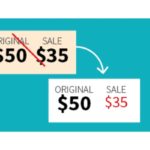
Visual pricing tactics are very powerful in influencing consumers and offering a visual contrast between prices is one of the most effective tools advertisers use. Creating a difference in the original price and the sale price can rope in unsuspecting shoppers.
Studies have shown that if the higher cost is in a bold font and brighter color than the original cost, more and more consumers will buy the item. This is just another sneaky way that advertisers present their sale items to us to influence our spending habits.
12 Social Proof
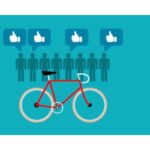
Social media has changed how advertisers push their products onto shoppers. Many companies rely on online reviews to attract people. Consumers like to fit in and have a fear of missing out, so be aware of targeted marketing on your social media accounts.
You’re more likely to spend money if your friends are doing the same. Marketing strategists also use social media influencers to review their products on Facebook and Instagram. From clothing brands to vitamins, these influencers are paid a lot of money to instill confidence in various items.
13 Buy One Get One Free

Who hasn’t taken advantage of a BOGO offer? This psychological trick is probably one of the most-used tricks that advertisers have up their sleeves. Many stores offer a “buy one, get one free” deal on many of their products. This isn’t always the bargain it seems to be, though.
This inspires shoppers to buy something at full price and get a second item for free. Shoppers absorb the price of the free item by paying a higher price on the original. According to researchers, BOGO has all but replaced the 50% sale. Everyone loves feeling like they’re getting something for free, even if they’re not.
14 The Instant Markdown

Just how far will businesses go to get you to buy their products? They take advantage of several subliminal tactics, and one of those tricks is the instant markdown. This is where a retailer will mark down a product to the lowest possible price while still making a profit.
You might see a sign that says, “Retail price $19.99: Our price $9.99”. Shoppers see the compared prices and feel like they’re coming out on top. It creates the illusion that you’re getting the item for a steal. This is a very effective technique.
15 Small Daily Equivalence

Marketers also have their ways of making an expensive price seem affordable. They’ll often break the price down into small daily equivalences. Instead of listing the actual price, a retailer may show how much it would cost you per day to buy the product.
This creates the illusion that we’re spending less money than we are. The human mind is attracted to smaller numbers, so people show a willingness to spend money at the sight of a lesser number. Another common trick is for advisers to say that it’s cheaper than a cup of coffee.
16 Remove The Pain Of Paying

No one enjoys watching the meter run while riding in a taxi, and some businesses have removed the pain of paying for a service altogether. This psychological tactic allows customers to pay up front via online payments, so they don’t have to think about the money they’re spending.
Uber and Lyft are two companies that have taken advantage of this trick. Riders know they’ll be paying before they catch a ride, so it seems like a painless process. This is a savvy way to tap into people’s bank accounts without them having to open their wallets.
17 The Nostalgia Factor
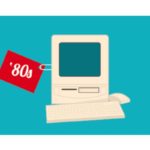
Retailers can hook customers into buying products by using the nostalgia factor. According to the Visual Capitalist, research shows that nostalgia makes people “value money less” and feel willing to “pay more”. They tap into consumers’ emotions about the past and influence them to spend their cash.
This trick is very effective on millennials who long for easier times in our current climate. From Nintendos to Polaroid cameras, the nostalgia factor is a subtle way to pull customers into a simpler mindset and inspire them to fork over some serious money.
18 Focus On Time Rather Than Money

Once again, advertisers take advantage of consumer’s emotions and influence them to focus on their time instead of money. People want to be happy and have fun, so suggesting that a person will enjoy their product is an effective way to get them to buy an item.
Customers would much rather focus on how much they’ll love a product than how much money they have to spend to buy it. Video game consoles, televisions, and computers are often advertised this way. This is why so many people will pay an arm and a leg for the newest iPhone.
19 Staples In The Back

Retailers have to take advantage of every moment that a person is in their store. This leads us to the next psychological trick that marketing strategists use and that’s putting staples in the back of the store. You might notice that milk and produce are usually in the farthest reaches.
This is done by design to force you to pass other products along the way. Customers may not even realize they’re giving in to impulse shopping as they fill up their carts on the way to buy cheese. Costco is one establishment that shamelessly uses this tactic.
20 Include Expensive Items Most People Won’t Buy
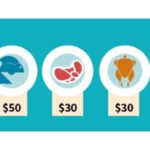
Restaurants also have tricks to get people to spend more money while dining out. One method they use is called “arbitrary coherence”. This is when they include expensive menu items that they know no one will buy, just to influence them to spend a bit less on the next best product.
A customer may not be willing to spend $40 on the lobster, but they might be willing to pay $30 for the crab legs. The cost seems a lot less expensive in comparison, and many people don’t even realize that they’ve fallen for one of the oldest tricks in the book.
